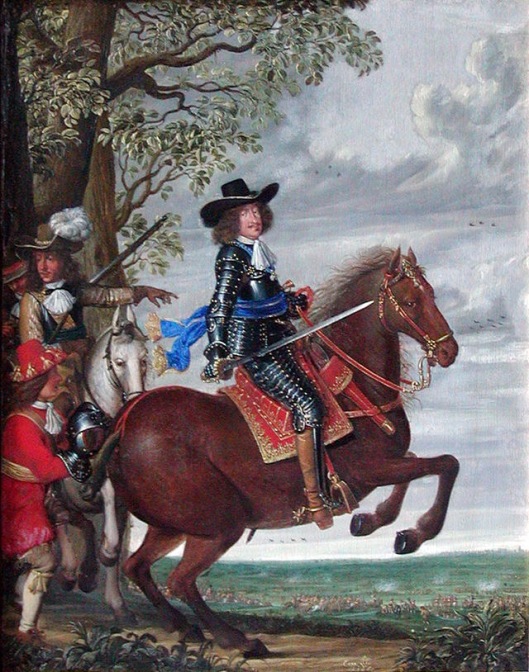Tags
Absolute Monarchy, Christian IV of Denmark and Norway, Elective Monarchy, Frederick III of Denmark and Norway, Revolutions 1948, Sophie Amalie of Brunswick-Lüneburg
Frederik III (March 18, 1609 – February 9, 1670) was king of Denmark and Norway from 1648 until his death in 1670. He also governed under the name Frederik II as diocesan administrator (colloquially referred to as prince-bishop) of the Prince-Bishopric of Verden (1623–29 and again 1634–44), and the Prince-Archbishopric of Bremen (1635–45).

Frederik was born at Haderslev in Slesvig, the second son of Christian IV and Anne Catherine of Brandenburg. Anne Catherine was born in Halle (Saale) and raised in Wolmirstedt. Her parents were Joachim Friedrich, Margrave of Brandenburg and his first wife Catherine of Brandenburg-Küstrin. In his youth and early manhood, there was no prospect of Frederik ascending the Danish throne, as his older brother Christian was elected heir apparent in 1608. Frederik was only considered an heir to the throne after the death of his older brother Prince Christian in 1647.
With the death of his elder brother Christian in June 1647, it opened the possibility for Frederik to be elected heir apparent to the Danish throne. However, this issue was still unsettled when Christian IV died on February 28, 1648. However, due to misgivings about the rule of Christian IV, as well as Frederick’s previous confrontational administrations in Bremen and Verden and his quarrels with Anders Bille, he was only elected after he had signed a Haandfæstning charter which included provisions curtailing the already diminished royal prerogative in favour of increased influence for the Rigsraadet. On July 6, Frederik received the homage of his subjects, and he was crowned on November 23.
As king, he fought two wars against Sweden. He was defeated in the Dano-Swedish War of 1657–1658, but attained great popularity when he weathered the 1659 Assault on Copenhagen and won the Dano-Swedish War of 1658–1660.

Later that year, Frederik used his popularity to disband the elective monarchy and instituted absolute monarchy in Denmark-Norway in 1660, confirmed by law in 1665 as the first in Western historiography. Prior to the creation of the absolute monarchy the crown of Denmark had been elective. The absolute monarchy lasted until 1848 in Denmark, the year of revolutions, when the people of Denmark demanded a constitution from King Christian VIII. Frederik III also ordered the creation of the Throne Chair of Denmark.

Sophie Amalie of Brunswick-Lüneburg
On October 1, 1643 Prince Frederik married Sophie Amalie of Brunswick-Lüneburg in Castle Glücksburg. Sophie Amalie was born at the Herzberg Castle, in Herzberg am Harz. Her parents were Georg, Duke of Brunswick-Lüneburg and Anne Eleonore of Hesse-Darmstadt. Nothing is known of her childhood.
The marriage was arranged in 1640, as it was considered suitable for the current situation of the groom: he was, at that point, archbishop of Bremen and not heir to the throne, and was not expected to succeed to the throne. It is believed to be a political match, though the exact purpose of it is unknown. They had 8 children, including King Christian V of Denmark and Ulrike Eleonora of Denmark who married King Carl XI of Sweden.
Frederik III died at Copenhagen Castle aged 60, and is interred in Roskilde Cathedral.
